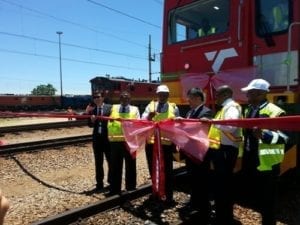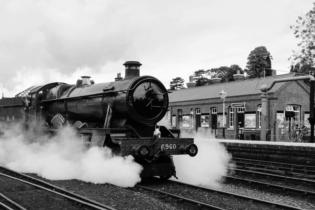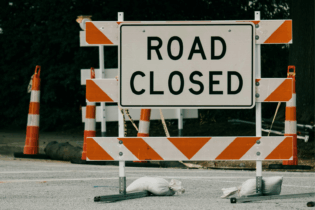The first consignment of dual voltage electric Class 20E locomotives have been handed over to Transnet Freight Rail (TFR). The two locomotives arrived a month earlier than anticipated and are part of the 95 electric locomotives to be deployed in the General Freight Business.
An additional four locomotives are expected to arrive before the end of December 2013, and they will undergo rigorous testing prior to their deployment onto the rail network for freight movement. During October 2012 Transnet announced a consortium led by CSR Zhuzhou Electric Locomotive as the successful bidder for the supply of 95 electric locomotives. Ten (10) of the 95 locomotives will be manufactured in CSR’s factories in China, of which 2 have already arrived, with the remainder being assembled in South Africa by Transnet Engineering. Siyabonga Gama Transnet Freight Rail Chief Executive says “The purchase is part of Transnet’s long-term fleet renewal programme to increase capacity whilst improving the average age of its fleet. This is in an effort to deliver on the stringent requirements of the Market Demand Strategy (MDS), in which Transnet Freight Rail is expected to grow its volumes from the current 207 million tonnes per annum to over 350 million tonnes in just six years.” “This new fleet introduces modern technology such as Radio Frequency Distributed Power (RFDP) that will benefit the Manganese line where most of the Class 20E locomotives will be deployed. They will boost the existing fleet on the line, so as to handle the projected increasing demand in Manganese exports, as TFR expands capacity on the manganese line from 7 – m tonnes to 16 – m tonnes over the next six years.” Benefits stemming from the 20E’s include their dual voltage capabilities, which allows them to operate on both the 3 kV Direct Current or 25 kV Alternating Current traction power supply networks. The dual voltage capability allows TFR to traverse its network more efficiently by overcoming the current practice of locomotive changes due to the different voltage types. The locomotives have been built with certain redundancy capabilities allowing higher reliability and thus predictability for the customers.Coupled to the above, added advantages of these locomotives are:
• Energy efficient as they use less power on TFR’s DC drive technology, • able to regenerate power back into the Eskom generated power grid which could be re-used; • have longer maintenance cycles of 90 to 120 days compared to the current 36 to 60 days and • have been better designed to be more comfortable for the driver. States Gama, “The early arrival of the locomotives is an indication of the hard work and commitment of both TFR and CSR to ensuring that the former realises its aspirations of ramping up capacity ahead of demand with improved operational efficiencies as catalysts for economic growth in the country.”







